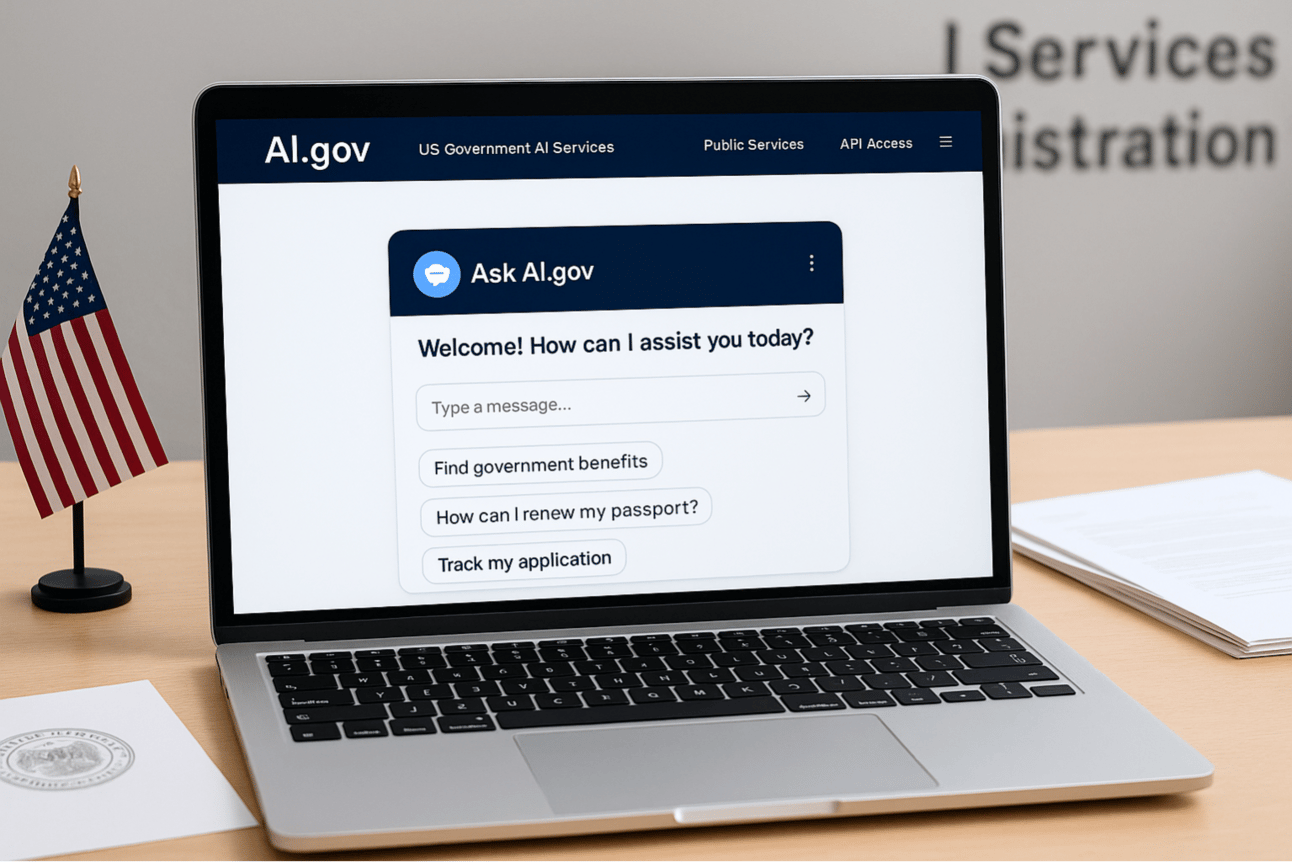
Image Source: ChatGPT-4o
Trump Administration Plans to Launch AI Chatbot via AI.gov
The Trump administration is reportedly preparing to launch a government-backed AI chatbot accessible through a new platform: AI.gov. While the website is not yet live, early versions of the site and related code have surfaced online, offering a first look at how the U.S. government may soon deploy AI tools for public services.
According to 404 Media, the AI.gov initiative is being developed by the Technology Transformation Services division of the General Services Administration. The project is led by former Tesla engineer Thomas Shedd, who has close ties to the Department of Government Efficiency (DOGE), a Trump-era body advocating for the use of AI to improve federal operations like fraud detection and contract review.
Platform Set for Launch by July 4
The administration reportedly plans to launch the new AI platform on July 4, aligning its debut with Independence Day. The chatbot would offer a user-friendly interface designed to help Americans navigate government services more efficiently.
The GitHub repository and early web prototypes hint at a broader infrastructure behind the chatbot, suggesting the platform could evolve into a larger digital ecosystem for public-facing AI.
What AI.gov Will Offer
Initial reports suggest that AI.gov will deliver three core services:
AI Chat Assistant – A conversational interface to help U.S. residents get information or support without needing to contact government agencies directly.
Open API Access – The platform may support integrations with models from private sector leaders like OpenAI, Google, and Anthropic, offering developers or agencies a way to connect external tools with federal systems.
Agency Analytics Console – A backend component designed to help the government monitor and assess how AI is being implemented across departments, with the goal of accelerating innovation.
These features position AI.gov as both a public service tool and an internal modernization engine for federal operations.
Trump’s Broader AI Strategy
Since returning to office, President Trump has placed AI at the center of his government modernization agenda. He has proposed appointing a dedicated “AI czar” to lead federal regulation and deployment of AI technologies, and he has revived large-scale infrastructure efforts like the Stargate project—a $500 billion initiative to build out national AI infrastructure.
That project has already drawn participation from major tech leaders, including OpenAI CEO Sam Altman and Oracle co-founder Larry Ellison, signaling strong private-sector interest in aligning with federal AI priorities.
What This Means
If launched as planned, AI.gov could mark a significant turning point in how the U.S. government interacts with the public—using conversational AI to make services more accessible, immediate, and responsive.
More than a digital assistant, the project signals a broader ambition: to build national AI infrastructure that bridges public and private sectors. It also reflects a political shift toward embedding AI directly into federal strategy, governance, and regulation.
The success of AI.gov will likely hinge on transparency, security, and how well it balances cutting-edge innovation with public trust. But its mere existence suggests a future where talking to the government could feel less bureaucratic—and more like talking to an assistant.
Editor’s Note: This article was created by Alicia Shapiro, CMO of AiNews.com, with writing, image, and idea-generation support from ChatGPT, an AI assistant. However, the final perspective and editorial choices are solely Alicia Shapiro’s. Special thanks to ChatGPT for assistance with research and editorial support in crafting this article.
